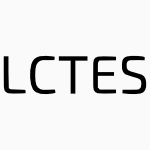69 papers:
 CASE-2015-ChenY #monitoring #process
CASE-2015-ChenY #monitoring #process- Heterogeneous recurrence T2 charts for monitoring and control of nonlinear dynamic processes (YC, HY), pp. 1066–1071.
 DRR-2015-MiouletBCPB #architecture #multi #network #recognition
DRR-2015-MiouletBCPB #architecture #multi #network #recognition- Exploring multiple feature combination strategies with a recurrent neural network architecture for off-line handwriting recognition (LM, GB, CC, TP, SB).
 SAS-2015-BakhirkinBP #analysis #set
SAS-2015-BakhirkinBP #analysis #set- A Forward Analysis for Recurrent Sets (AB, JB, NP), pp. 293–311.
 LATA-2015-BilottaPPR #problem
LATA-2015-BilottaPPR #problem- Recurrence Relations, Succession Rules, and the Positivity Problem (SB, EP, RP, SR), pp. 499–510.
 ICML-2015-ChungGCB #feedback #network
ICML-2015-ChungGCB #feedback #network- Gated Feedback Recurrent Neural Networks (JC, ÇG, KC, YB), pp. 2067–2075.
 ICML-2015-GregorDGRW #generative #image #named #network
ICML-2015-GregorDGRW #generative #image #named #network- DRAW: A Recurrent Neural Network For Image Generation (KG, ID, AG, DJR, DW), pp. 1462–1471.
 ICML-2015-JozefowiczZS #architecture #empirical #network
ICML-2015-JozefowiczZS #architecture #empirical #network- An Empirical Exploration of Recurrent Network Architectures (RJ, WZ, IS), pp. 2342–2350.
 VMCAI-2015-UrbanM #abstract interpretation #proving
VMCAI-2015-UrbanM #abstract interpretation #proving- Proving Guarantee and Recurrence Temporal Properties by Abstract Interpretation (CU, AM), pp. 190–208.
 ICALP-v2-2014-OuaknineW #linear #on the #problem #sequence
ICALP-v2-2014-OuaknineW #linear #on the #problem #sequence- On the Positivity Problem for Simple Linear Recurrence Sequences, (JO, JW), pp. 318–329.
 ICALP-v2-2014-OuaknineW14a #decidability #linear #sequence
ICALP-v2-2014-OuaknineW14a #decidability #linear #sequence- Ultimate Positivity is Decidable for Simple Linear Recurrence Sequences (JO, JW), pp. 330–341.
 ICML-c1-2014-PinheiroC #network
ICML-c1-2014-PinheiroC #network- Recurrent Convolutional Neural Networks for Scene Labeling (PHOP, RC), pp. 82–90.
 ICML-c2-2014-GravesJ #network #recognition #speech #towards
ICML-c2-2014-GravesJ #network #recognition #speech #towards- Towards End-To-End Speech Recognition with Recurrent Neural Networks (AG, NJ), pp. 1764–1772.
 ICML-c2-2014-MittelmanKSL #strict
ICML-c2-2014-MittelmanKSL #strict- Structured Recurrent Temporal Restricted Boltzmann Machines (RM, BK, SS, HL), pp. 1647–1655.
 ICPR-2014-AlvaroSB #network
ICPR-2014-AlvaroSB #network- Offline Features for Classifying Handwritten Math Symbols with Recurrent Neural Networks (FA, JAS, JMB), pp. 2944–2949.
 ICPR-2014-ChenWCN #detection #fault #modelling #network
ICPR-2014-ChenWCN #detection #fault #modelling #network- Confusion Network Based Recurrent Neural Network Language Modeling for Chinese OCR Error Detection (JC, YW, HC, PN), pp. 1266–1271.
 ICDAR-2013-AlvaroSB #classification #hybrid #network #online
ICDAR-2013-AlvaroSB #classification #hybrid #network #online- Classification of On-Line Mathematical Symbols with Hybrid Features and Recurrent Neural Networks (FA, JAS, JMB), pp. 1012–1016.
 ICDAR-2013-SchambachR #learning #network #sequence
ICDAR-2013-SchambachR #learning #network #sequence- Stabilize Sequence Learning with Recurrent Neural Networks by Forced Alignment (MPS, SFR), pp. 1270–1274.
 LATA-2013-GocSS #automation #sequence #word
LATA-2013-GocSS #automation #sequence #word- Primitive Words and Lyndon Words in Automatic and Linearly Recurrent Sequences (DG, KS, JS), pp. 311–322.
 ICML-c3-2013-PascanuMB #network #on the
ICML-c3-2013-PascanuMB #network #on the- On the difficulty of training recurrent neural networks (RP, TM, YB), pp. 1310–1318.
 CSCW-2012-NussliJ #interactive #programming #quality
CSCW-2012-NussliJ #interactive #programming #quality- Effects of sharing text selections on gaze cross-recurrence and interaction quality in a pair programming task (MAN, PJ), pp. 1125–1134.
 ICPR-2012-ShiT
ICPR-2012-ShiT- Background subtraction via early recurrence in dynamic scenes (XS, JKT), pp. 3172–3175.
 ICML-2011-MartensS #learning #network #optimisation
ICML-2011-MartensS #learning #network #optimisation- Learning Recurrent Neural Networks with Hessian-Free Optimization (JM, IS), pp. 1033–1040.
 ICML-2011-SutskeverMH #generative #network
ICML-2011-SutskeverMH #generative #network- Generating Text with Recurrent Neural Networks (IS, JM, GEH), pp. 1017–1024.
 CSL-2011-Makowsky
CSL-2011-Makowsky- Model Theory in Computer Science: My Own Recurrent Themes (JAM), pp. 553–567.
 LATA-2010-CabessaV #classification #first-order #network
LATA-2010-CabessaV #classification #first-order #network- A Hierarchical Classification of First-Order Recurrent Neural Networks (JC, AEPV), pp. 142–153.
 ICDAR-2009-Schambach #graph #recognition
ICDAR-2009-Schambach #graph #recognition- Recurrent HMMs and Cursive Handwriting Recognition Graphs (MPS), pp. 1146–1150.
 ICML-2009-Makino #network #predict #representation
ICML-2009-Makino #network #predict #representation- Proto-predictive representation of states with simple recurrent temporal-difference networks (TM), pp. 697–704.
 SAC-2009-ZhangLZZZZ #first-order #linear #optimisation
SAC-2009-ZhangLZZZZ #first-order #linear #optimisation- Optimizing techniques for saturated arithmetic with first-order linear recurrence (WZ, LL, CZ, HZ, BZ, CZ), pp. 1883–1889.
 LCTES-2009-OhEPM #architecture #configuration management #scheduling
LCTES-2009-OhEPM #architecture #configuration management #scheduling- Recurrence cycle aware modulo scheduling for coarse-grained reconfigurable architectures (TO, BE, HP, SAM), pp. 21–30.
 CAV-2009-VerdoolaegeJB #equivalence #source code #using
CAV-2009-VerdoolaegeJB #equivalence #source code #using- Equivalence Checking of Static Affine Programs Using Widening to Handle Recurrences (SV, GJ, MB), pp. 599–613.
 SAS-2008-AlbertAGP #automation #bound #cost analysis
SAS-2008-AlbertAGP #automation #bound #cost analysis- Automatic Inference of Upper Bounds for Recurrence Relations in Cost Analysis (EA, PA, SG, GP), pp. 221–237.
 ITiCSE-2007-ByrdCCKK #problem #student
ITiCSE-2007-ByrdCCKK #problem #student- Solving recurring student problems with recurrences (JB, MC, DC, PK, MJK), p. 343.
 HCI-MIE-2007-DerakhshiK #bound #fuzzy #network #predict #sequence #using #word
HCI-MIE-2007-DerakhshiK #bound #fuzzy #network #predict #sequence #using #word- Using Recurrent Fuzzy Neural Networks for Predicting Word Boundaries in a Phoneme Sequence in Persian Language (MRFD, MRK), pp. 50–59.
 ICEIS-AIDSS-2007-CuellarDP #algorithm #hybrid #network #problem
ICEIS-AIDSS-2007-CuellarDP #algorithm #hybrid #network #problem- Problems and Features of Evolutionary Algorithms to Build Hybrid Training Methods for Recurrent Neural Networks (MPC, MD, MdCPJ), pp. 204–211.
 ICEIS-AIDSS-2007-SkaruzSB #approach #detection #network #sql
ICEIS-AIDSS-2007-SkaruzSB #approach #detection #network #sql- Recurrent Neural Networks Approach to The Detection of SQL Attacks (JS, FS, PB), pp. 191–197.
 PEPM-2006-LucaAAK #program transformation
PEPM-2006-LucaAAK #program transformation- Program transformation by solving recurrences (BL, SA, HA, SCK), pp. 121–129.
 ICML-2006-GravesFGS #classification #network #sequence
ICML-2006-GravesFGS #classification #network #sequence- Connectionist temporal classification: labelling unsegmented sequence data with recurrent neural networks (AG, SF, FJG, JS), pp. 369–376.
 ICEIS-v2-2005-CuellarDJ #network #predict #problem #programming
ICEIS-v2-2005-CuellarDJ #network #predict #problem #programming- An Application of Non-Linear Programming to Train Recurrent Neural Networks in Time Series Prediction Problems (MPC, MD, MdCPJ), pp. 35–42.
 ICEIS-v2-2005-HuangK #network #online #recognition
ICEIS-v2-2005-HuangK #network #online #recognition- A Recurrent Neural Network Recogniser for Online Recognition of Handwritten Symbols (BQH, MTK), pp. 27–34.
 ICEIS-v2-2004-CuellarNJP #algorithm #case study #comparative #network #predict
ICEIS-v2-2004-CuellarNJP #algorithm #case study #comparative #network #predict- A Comparative Study of Evolutionary Algorithms for Training Elman Recurrent Neural Networks to Predict Autonomous Indebtedness (MPC, AN, MdCPJ, RPP), pp. 461–464.
 ICPR-v2-2004-MiyamotoUHIO #comparison #predict
ICPR-v2-2004-MiyamotoUHIO #comparison #predict- Comparison of Microarray-Based Predictive Systems for Early Recurrence of Cancer (TM, SU, YH, NI, MO), pp. 347–350.
 ICPR-v4-2004-ChenC04a #bidirectional #dependence #learning #network
ICPR-v4-2004-ChenC04a #bidirectional #dependence #learning #network- Improvement of Bidirectional Recurrent Neural Network for Learning Long-Term Dependencies (JC, NSC), pp. 593–596.
 KDD-2004-YanVS #predict
KDD-2004-YanVS #predict- Predicting prostate cancer recurrence via maximizing the concordance index (LY, DV, OS), pp. 479–485.
 VMCAI-2003-KroeningS #performance
VMCAI-2003-KroeningS #performance- Efficient Computation of Recurrence Diameters (DK, OS), pp. 298–309.
 KDD-2002-LiangK #mining #network
KDD-2002-LiangK #mining #network- Mining heterogeneous gene expression data with time lagged recurrent neural networks (YL, AK), pp. 415–421.
 ICFP-2001-Grobauer #source code
ICFP-2001-Grobauer #source code- Cost Recurrences for DML Programs (BG), pp. 253–264.
 TLCA-2001-Danner #dependent type
TLCA-2001-Danner #dependent type- Ramified Recurrence with Dependent Types (ND), pp. 91–105.
 ICPR-v2-2000-WilsonH00a #correlation #optimisation
ICPR-v2-2000-WilsonH00a #correlation #optimisation- Optimizing Pattern Recovery in Recurrent Correlation Associative Memories (RCW, ERH), pp. 6005–6009.
 ICDAR-1999-PalmeroD #documentation #using
ICDAR-1999-PalmeroD #documentation #using- Structured Document Labeling and Rule Extraction using a New Recurrent Fuzzy-neural System (GISP, YAD), pp. 181–184.
 ICALP-1997-Roura #divide and conquer #theorem
ICALP-1997-Roura #divide and conquer #theorem- An Improved Master Theorem for Divide-and-Conquer Recurrences (SR), pp. 449–459.
 ICPR-1996-SongKL #architecture #network #pattern matching #pattern recognition #recognition
ICPR-1996-SongKL #architecture #network #pattern matching #pattern recognition #recognition- A new recurrent neural network architecture for pattern recognition (HHS, SMK, SWL), pp. 718–722.
 ICDAR-v1-1995-LeeK95b #network #recognition
ICDAR-v1-1995-LeeK95b #network #recognition- A new type of recurrent neural network for handwritten character recognition (SWL, YJK), pp. 38–41.
 ICDAR-v1-1995-LeeL #network #recognition #segmentation
ICDAR-v1-1995-LeeL #network #recognition #segmentation- Integrated segmentation and recognition of connected handwritten characters with recurrent neural network (SWL, EJL), pp. 413–416.
 PPoPP-1995-GhuloumF
PPoPP-1995-GhuloumF- Flattening and Parallelizing Irregular, Recurrent Loop Nests (AMG, ALF), pp. 58–67.
 ICALP-1993-FlajoletG #divide and conquer
ICALP-1993-FlajoletG #divide and conquer- Exact Asymptotics of Divide-and-Conquer Recurrences (PF, MJG), pp. 137–149.
 CAV-1993-Krishnakumar #composition #finite #reachability #state machine
CAV-1993-Krishnakumar #composition #finite #reachability #state machine- Reachability and Recurrence in Extended Finite State Machines: Modular Vector Addition Systems (ASK), pp. 110–122.
 DAC-1992-DamianiM #equation #logic #optimisation
DAC-1992-DamianiM #equation #logic #optimisation- Recurrence Equations and the Optimization of Synchronous Logic Circuits (MD, GDM), pp. 556–561.
 ICALP-1992-Shallit #linear #set
ICALP-1992-Shallit #linear #set- Numeration Systems, Linear Recurrences, and Regular Sets (Extended Abstract) (JS), pp. 89–100.
 ML-1992-OmlinG #higher-order #network #using
ML-1992-OmlinG #higher-order #network #using- Training Second-Order Recurrent Neural Networks using Hints (CWO, CLG), pp. 361–366.
 STOC-1991-Karp #probability
STOC-1991-Karp #probability- Probabilistic Recurrence Relations (RMK), pp. 190–197.
 ICALP-1991-ChenH #logic programming
ICALP-1991-ChenH #logic programming- Logic Programming with Recurrence Domains (HC, JH), pp. 20–34.
 CHI-1991-MurakamiT #gesture #network #recognition #using
CHI-1991-MurakamiT #gesture #network #recognition #using- Gesture recognition using recurrent neural networks (KM, HT), pp. 237–242.
 PLDI-1990-AmmarguellatH #abstract interpretation #automation #induction #recognition
PLDI-1990-AmmarguellatH #abstract interpretation #automation #induction #recognition- Automatic Recognition of Induction Variables and Recurrence Relations by Abstract Interpretation (ZA, WLHI), pp. 283–295.
 SIGMOD-1986-GardarinM #database #evaluation #logic programming #recursion #source code
SIGMOD-1986-GardarinM #database #evaluation #logic programming #recursion #source code- Evaluation of Database Recursive Logic Programs as Recurrent Function Series (GG, CdM), pp. 177–186.
 LICS-1986-PerrinS #automaton #decidability #equivalence #integer #monad
LICS-1986-PerrinS #automaton #decidability #equivalence #integer #monad- Automata on the Integers, Recurrence Distinguishability, and the Equivalence and Decidability of Monadic Theories (DP, PES), pp. 301–304.
 DAC-1981-BilgoryG #automation #generative
DAC-1981-BilgoryG #automation #generative- Automatic generation of cells for recurrence structures (AB, DDG), pp. 306–313.
 ICALP-1978-Zilli #combinator #logic #normalisation
ICALP-1978-Zilli #combinator #logic #normalisation- Head Recurrent Terms in Combinatory Logic: A Generalization of the Notion of Head Normal Form (MVZ), pp. 477–493.
 GG-1978-LuckL #2d #difference #generative #graph #parallel
GG-1978-LuckL #2d #difference #generative #graph #parallel- Two-Dimensional, Differential, Intercalary Plant Tissue Growth and Parallel Graph Generating and Graph Recurrence Systems (JL, HBL), pp. 284–300.
 STOC-1975-HyafilK #complexity #evaluation #linear #parallel
STOC-1975-HyafilK #complexity #evaluation #linear #parallel- The Complexity of Parallel Evaluation of Linear Recurrence (LH, HTK), pp. 12–22.
 CASE-2015-ChenY #monitoring #process
CASE-2015-ChenY #monitoring #process DRR-2015-MiouletBCPB #architecture #multi #network #recognition
DRR-2015-MiouletBCPB #architecture #multi #network #recognition SAS-2015-BakhirkinBP #analysis #set
SAS-2015-BakhirkinBP #analysis #set LATA-2015-BilottaPPR #problem
LATA-2015-BilottaPPR #problem ICML-2015-ChungGCB #feedback #network
ICML-2015-ChungGCB #feedback #network ICML-2015-GregorDGRW #generative #image #named #network
ICML-2015-GregorDGRW #generative #image #named #network ICML-2015-JozefowiczZS #architecture #empirical #network
ICML-2015-JozefowiczZS #architecture #empirical #network VMCAI-2015-UrbanM #abstract interpretation #proving
VMCAI-2015-UrbanM #abstract interpretation #proving ICALP-v2-2014-OuaknineW #linear #on the #problem #sequence
ICALP-v2-2014-OuaknineW #linear #on the #problem #sequence ICALP-v2-2014-OuaknineW14a #decidability #linear #sequence
ICALP-v2-2014-OuaknineW14a #decidability #linear #sequence ICML-c1-2014-PinheiroC #network
ICML-c1-2014-PinheiroC #network ICML-c2-2014-GravesJ #network #recognition #speech #towards
ICML-c2-2014-GravesJ #network #recognition #speech #towards ICML-c2-2014-MittelmanKSL #strict
ICML-c2-2014-MittelmanKSL #strict ICPR-2014-AlvaroSB #network
ICPR-2014-AlvaroSB #network ICPR-2014-ChenWCN #detection #fault #modelling #network
ICPR-2014-ChenWCN #detection #fault #modelling #network ICDAR-2013-AlvaroSB #classification #hybrid #network #online
ICDAR-2013-AlvaroSB #classification #hybrid #network #online ICDAR-2013-SchambachR #learning #network #sequence
ICDAR-2013-SchambachR #learning #network #sequence LATA-2013-GocSS #automation #sequence #word
LATA-2013-GocSS #automation #sequence #word ICML-c3-2013-PascanuMB #network #on the
ICML-c3-2013-PascanuMB #network #on the CSCW-2012-NussliJ #interactive #programming #quality
CSCW-2012-NussliJ #interactive #programming #quality ICPR-2012-ShiT
ICPR-2012-ShiT ICML-2011-MartensS #learning #network #optimisation
ICML-2011-MartensS #learning #network #optimisation ICML-2011-SutskeverMH #generative #network
ICML-2011-SutskeverMH #generative #network CSL-2011-Makowsky
CSL-2011-Makowsky LATA-2010-CabessaV #classification #first-order #network
LATA-2010-CabessaV #classification #first-order #network ICDAR-2009-Schambach #graph #recognition
ICDAR-2009-Schambach #graph #recognition ICML-2009-Makino #network #predict #representation
ICML-2009-Makino #network #predict #representation SAC-2009-ZhangLZZZZ #first-order #linear #optimisation
SAC-2009-ZhangLZZZZ #first-order #linear #optimisation LCTES-2009-OhEPM #architecture #configuration management #scheduling
LCTES-2009-OhEPM #architecture #configuration management #scheduling CAV-2009-VerdoolaegeJB #equivalence #source code #using
CAV-2009-VerdoolaegeJB #equivalence #source code #using SAS-2008-AlbertAGP #automation #bound #cost analysis
SAS-2008-AlbertAGP #automation #bound #cost analysis ITiCSE-2007-ByrdCCKK #problem #student
ITiCSE-2007-ByrdCCKK #problem #student HCI-MIE-2007-DerakhshiK #bound #fuzzy #network #predict #sequence #using #word
HCI-MIE-2007-DerakhshiK #bound #fuzzy #network #predict #sequence #using #word ICEIS-AIDSS-2007-CuellarDP #algorithm #hybrid #network #problem
ICEIS-AIDSS-2007-CuellarDP #algorithm #hybrid #network #problem ICEIS-AIDSS-2007-SkaruzSB #approach #detection #network #sql
ICEIS-AIDSS-2007-SkaruzSB #approach #detection #network #sql PEPM-2006-LucaAAK #program transformation
PEPM-2006-LucaAAK #program transformation ICML-2006-GravesFGS #classification #network #sequence
ICML-2006-GravesFGS #classification #network #sequence ICEIS-v2-2005-CuellarDJ #network #predict #problem #programming
ICEIS-v2-2005-CuellarDJ #network #predict #problem #programming ICEIS-v2-2005-HuangK #network #online #recognition
ICEIS-v2-2005-HuangK #network #online #recognition ICEIS-v2-2004-CuellarNJP #algorithm #case study #comparative #network #predict
ICEIS-v2-2004-CuellarNJP #algorithm #case study #comparative #network #predict ICPR-v2-2004-MiyamotoUHIO #comparison #predict
ICPR-v2-2004-MiyamotoUHIO #comparison #predict ICPR-v4-2004-ChenC04a #bidirectional #dependence #learning #network
ICPR-v4-2004-ChenC04a #bidirectional #dependence #learning #network KDD-2004-YanVS #predict
KDD-2004-YanVS #predict VMCAI-2003-KroeningS #performance
VMCAI-2003-KroeningS #performance KDD-2002-LiangK #mining #network
KDD-2002-LiangK #mining #network ICFP-2001-Grobauer #source code
ICFP-2001-Grobauer #source code TLCA-2001-Danner #dependent type
TLCA-2001-Danner #dependent type ICPR-v2-2000-WilsonH00a #correlation #optimisation
ICPR-v2-2000-WilsonH00a #correlation #optimisation ICDAR-1999-PalmeroD #documentation #using
ICDAR-1999-PalmeroD #documentation #using ICALP-1997-Roura #divide and conquer #theorem
ICALP-1997-Roura #divide and conquer #theorem ICPR-1996-SongKL #architecture #network #pattern matching #pattern recognition #recognition
ICPR-1996-SongKL #architecture #network #pattern matching #pattern recognition #recognition ICDAR-v1-1995-LeeK95b #network #recognition
ICDAR-v1-1995-LeeK95b #network #recognition ICDAR-v1-1995-LeeL #network #recognition #segmentation
ICDAR-v1-1995-LeeL #network #recognition #segmentation PPoPP-1995-GhuloumF
PPoPP-1995-GhuloumF ICALP-1993-FlajoletG #divide and conquer
ICALP-1993-FlajoletG #divide and conquer CAV-1993-Krishnakumar #composition #finite #reachability #state machine
CAV-1993-Krishnakumar #composition #finite #reachability #state machine DAC-1992-DamianiM #equation #logic #optimisation
DAC-1992-DamianiM #equation #logic #optimisation ICALP-1992-Shallit #linear #set
ICALP-1992-Shallit #linear #set ML-1992-OmlinG #higher-order #network #using
ML-1992-OmlinG #higher-order #network #using STOC-1991-Karp #probability
STOC-1991-Karp #probability ICALP-1991-ChenH #logic programming
ICALP-1991-ChenH #logic programming CHI-1991-MurakamiT #gesture #network #recognition #using
CHI-1991-MurakamiT #gesture #network #recognition #using PLDI-1990-AmmarguellatH #abstract interpretation #automation #induction #recognition
PLDI-1990-AmmarguellatH #abstract interpretation #automation #induction #recognition SIGMOD-1986-GardarinM #database #evaluation #logic programming #recursion #source code
SIGMOD-1986-GardarinM #database #evaluation #logic programming #recursion #source code LICS-1986-PerrinS #automaton #decidability #equivalence #integer #monad
LICS-1986-PerrinS #automaton #decidability #equivalence #integer #monad DAC-1981-BilgoryG #automation #generative
DAC-1981-BilgoryG #automation #generative ICALP-1978-Zilli #combinator #logic #normalisation
ICALP-1978-Zilli #combinator #logic #normalisation GG-1978-LuckL #2d #difference #generative #graph #parallel
GG-1978-LuckL #2d #difference #generative #graph #parallel STOC-1975-HyafilK #complexity #evaluation #linear #parallel
STOC-1975-HyafilK #complexity #evaluation #linear #parallel









